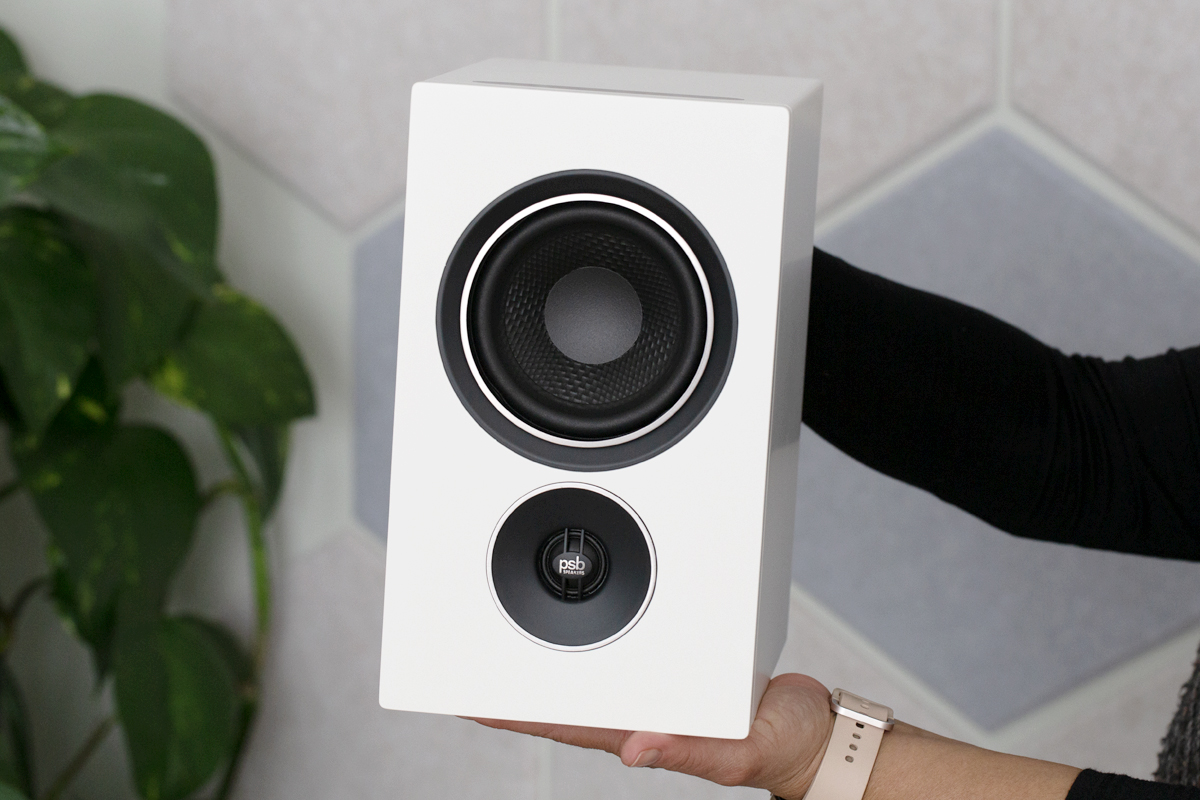I’ve been a strong proponent of active loudspeaker systems since early in my audio journey. As I described in my recent introductory feature, I bought my first set of active studio monitors back in the late 1990s. Before that, I had assembled an audio system piecemeal that incorporated active crossovers—and in the process, I heard the benefits of this approach firsthand.
Visit any recording studio today and you’ll see at least one set of active monitor speakers in the control room. This has been the case for decades now. Some of the earliest adopters of this technology were British studios in the 1970s, using active monitors developed by the BBC. ATC, PMC, and later Genelec and JBL Pro all developed active systems to meet the rigorous demands of broadcast, mixing, and mastering engineers, who require the most uncolored, precise playback possible.
The unflinching honesty and revealing qualities that active studio systems were developed for are exactly what audiophiles claim to seek in their listening rooms today. Yet walk into a hi‑fi store (insert joke here about being able to find one in 2025), and you’ll be greeted by a collection of passive speaker boxes flanked by racks of amplifiers, cables, and all kinds of associated bijoux.
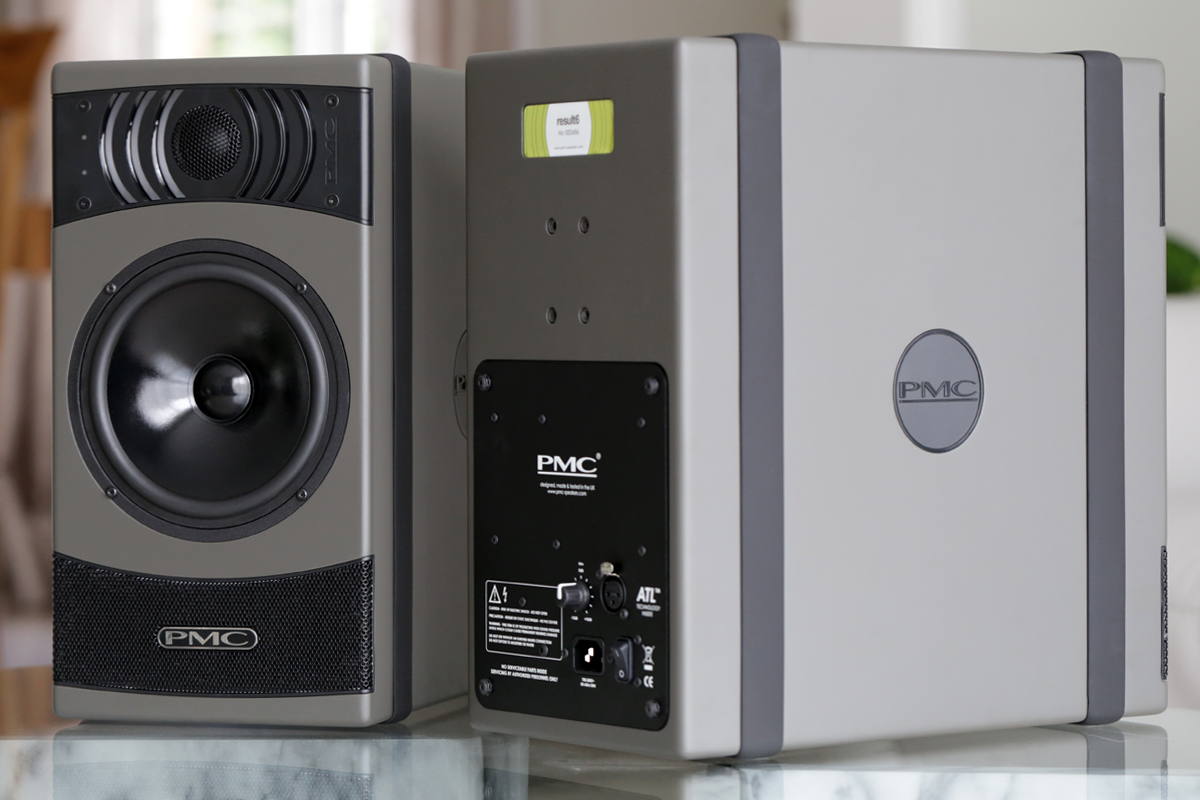 Designed for professional use, PMC’s result6 active studio monitor can also work well in consumer applications
Designed for professional use, PMC’s result6 active studio monitor can also work well in consumer applications
Why is it that active loudspeakers, which now dominate practically every area of the pro-audio world, are still a niche choice among audiophiles, even though they offer compelling technical and practical advantages?
In this piece I’m going to explore the cultural, technical, and emotional reasons behind this paradox. I’ll also make the case that active designs not only deserve more appreciation, but are the future of high-fidelity listening at home, even if that future is taking longer than expected to arrive.
Passive systems
The traditional approach to hi‑fi revolves around conventional passive speakers driven by a standalone amplifier, connected by lengths of speaker cable. Designing a high-quality loudspeaker requires distributing different frequency bands across different-sized drivers, each optimized for a certain portion of the audioband. The amplifier delivers its output into a crossover network composed of passive resistors, capacitors, and inductors that divide the signal among the speaker’s drivers.
Proponents of passive speaker systems contend that this setup offers advantages in flexibility, customization, and sound quality. There are a couple of arguments commonly made to support this.
First, passive systems allow system builders to choose each hi‑fi component individually, tailoring the sound precisely to their preferences. Enthusiasts can match specific amplifiers to speakers, experiment with cables, and swap out each link in the chain easily, fine-tuning their systems as they go.
Second, passive speaker supporters often cite sound purity as a key benefit. They argue that standalone external amplifiers typically employ superior power supplies, premium components, and meticulously engineered designs unencumbered by size or weight limitations. Theoretically, these can achieve lower distortion and greater dynamic headroom than built-in amplifier boards. Physically separating amplifiers and speakers also reduces potential electrical and mechanical interference, reducing noise and preserving signal integrity.
However, what gets ignored in this argument is the fact that while there may be amplifiers that can indeed achieve “perfect” or close-to-ideal specifications and performance, there is no perfect loudspeaker. This is a vast subject, but I’ll summarize by saying that no passive speaker can achieve perfect response both on- and off-axis in the frequency domain. Simply aspiring to this is difficult enough, in fact, that most designers scarcely consider time-domain behavior (group delay and phase response), which also has a significant influence on the perceived sound of a system.
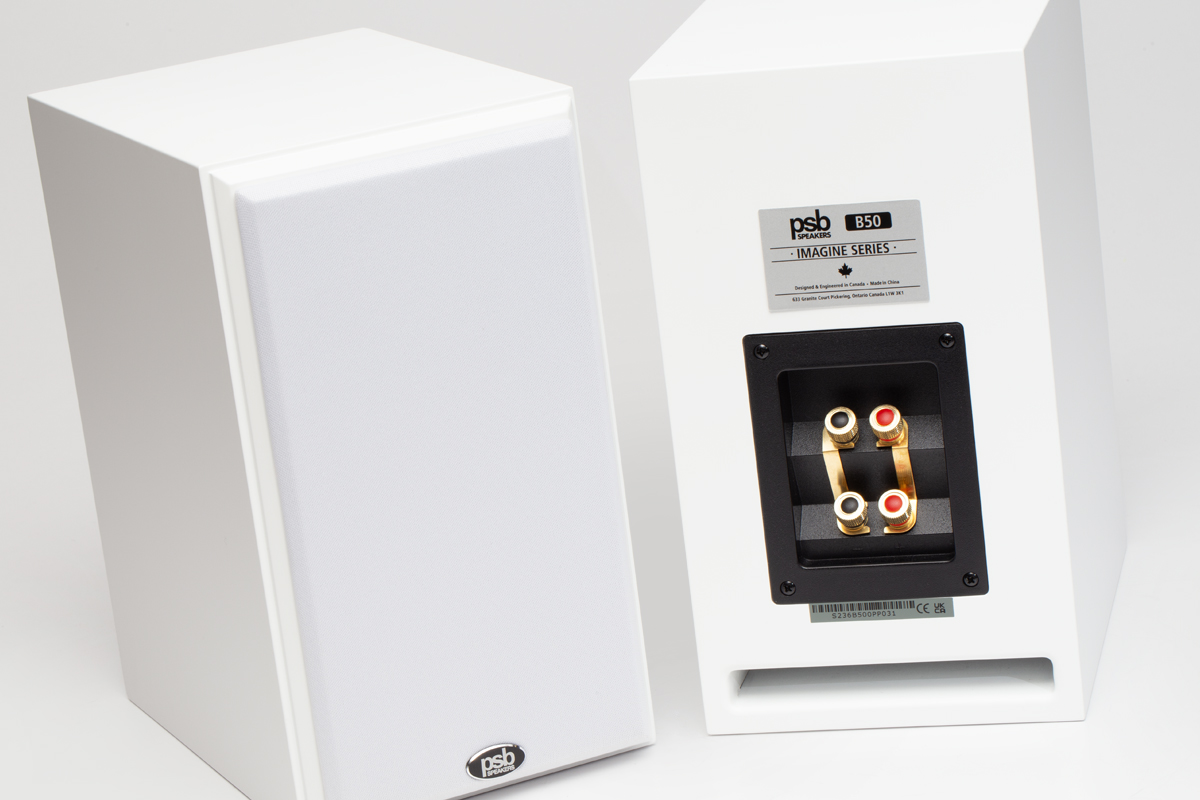 The PSB Imagine B50 loudspeaker looks similar to the PSB Alpha iQ active loudspeaker but is a traditional passive design, so it requires a separate amplifier
The PSB Imagine B50 loudspeaker looks similar to the PSB Alpha iQ active loudspeaker but is a traditional passive design, so it requires a separate amplifier
Moreover, the nature of the components used in passive crossovers, combined with the non-ideal behaviors of transducers, results in technical compromises that impact both sound quality and speaker efficiency; these issues can only be minimized, not eliminated. Here is a quick summary:
Loss of efficiency: In a traditional passive speaker system, the power from the amplifier passes through a passive crossover network before it reaches the speaker drivers. This network filters the audio signal so that each driver receives the frequencies it’s designed to handle. However, the process isn’t perfect. Some of the amplifier’s power is lost as heat in these crossover components, which means less of the original energy actually gets converted into sound.
Impedance dependency and distortion: A passive crossover’s behavior depends heavily on the electrical impedance of the connected drivers. The complication is that a driver’s impedance isn’t constant; it changes with frequency. This frequency-dependent impedance means that a passive crossover must be custom-designed for a specific speaker and relies on accurate models of complex electrical impedances for all the components involved. To complicate things further, all magnetic materials exhibit a property called hysteresis, which in turn causes distortion. This is in addition to the distortion caused by saturation of these components at high signal levels.
High parts cost: Passive crossovers consist entirely of physical components that have to handle the full output power of the amplifier. For high-performance systems, these components must not only tolerate significant power without distortion but also demonstrate extremely consistent behavior from unit to unit. Meeting these demands requires more-expensive parts, such as high-grade inductors and capacitors, especially when designing intricate filters for precise frequency shaping. As complexity rises, so does the cost.
Reduced damping factor and less-accurate bass: In an audio system, damping factor (DF) refers to the amplifier’s ability to precisely stop the speaker cone when the input signal stops. A high DF means the amplifier can control the driver well, ensuring tight, clear bass. In passive systems, the fact that the signal must pass through crossover components (and cable runs) between the amplifier and the driver inherently reduces the DF. With less control, bass notes sound less defined, and transients are reproduced less accurately. Reactive components can also lead to extra resonances or “ringing,” affecting the sound.
Phase errors and time smearing: Passive crossovers can unintentionally introduce phase shifts—changes in the timing relationship between different frequencies. When the bass, midrange, and treble don’t arrive at your ears with perfect alignment, you experience what’s known as time smearing. This blurring can reduce clarity and detail in the music, making it harder to distinguish subtle nuances in vocals or instrument placement.
Finding system synergy: Passive loudspeaker systems require the user to choose an appropriate amplifier. While this offers flexibility, it also means the system’s overall performance heavily depends on trial-and-error (or luck). The speaker designer can’t fully optimize performance because they don’t know which amplifier will be used.
The myth of the “ultimate” passive system: Despite all of this, there’s a persistent belief that the very best sound can only be achieved by carefully matching high-end separates. This myth is reinforced by the sheer variety and “prestige” of passive speakers and amplifiers in the high-end market. Big brands have cultivated a mystique around their flagship passive models, often paired up with amplifiers that cost as much as a car.
So let’s take a look at the alternative: active loudspeakers.
What do we mean by active?
In active loudspeakers, the crossover network operates before current amplification is applied to the signal, so the drivers for the different frequency bands—subwoofer, woofer, midrange, tweeter, etc.—each have their own dedicated power amplifier. These designs usually integrate the crossovers and amplifiers into, or mount them on the back of, the speaker enclosure. Active speakers therefore require a power supply for the electronics, and they must be fed an audio input as either a line-level analog (balanced or unbalanced) signal, or in a digital format (typically PCM).
As an important sidenote, powered speaker systems—where an amplifier is integrated into the speaker housing but passive crossovers are employed at its output—are often confused with active systems, since they also need to be plugged into a power source. However, powered speakers are essentially a halfway house between traditional passive speakers and active systems. They do not reap most of the potential benefits that actives offer, and suffer many of the downsides of passives.
So, let’s now consider the objective advantages that active loudspeakers offer. Note that I’m not going to discuss the relative merits of room correction here, since processors can be added upstream of either active or passive systems or integrated into the amplification stages of either.
High-precision and advanced crossover filtering: Active speakers use active crossovers that operate either in the analog (at line level) or digital domains. This design allows for much more accurate and sophisticated audio-frequency filtering, while minimizing distortion, regardless of output level.
Superior efficiency: Because the crossover in an active system comes before the power amplifier, there is negligible power loss in the crossover itself. This increased efficiency means more of the amplifier’s output power is converted into sound rather than wasted as heat, making active speakers more energy-efficient compared to passive setups.
Smaller boxes: Active equalization lets designers optimize the relationship between cabinet size and amplifier power. This enables smaller, sealed (for lower group delay) speaker enclosures that still maintain excellent low-frequency performance and time-domain behavior, making very compact high-fidelity speakers possible.
 KEF’s LS60 Wireless active speaker system employs amplifiers carefully matched to the three drivers: a highly efficient 500W class-D amp for the four 5.25″ woofers, a 100W class-D amp for the 4″ midrange, and a 100W class-AB amp for the 0.75″ aluminum dome tweeter
KEF’s LS60 Wireless active speaker system employs amplifiers carefully matched to the three drivers: a highly efficient 500W class-D amp for the four 5.25″ woofers, a 100W class-D amp for the 4″ midrange, and a 100W class-AB amp for the 0.75″ aluminum dome tweeter
Perfect amp-driver matching: With dedicated amplifiers for each driver, designers can perfectly tune power ratings and other characteristics (amp topology, headroom, impedance, damping, and frequency response) to match each transducer’s exact needs. This level of optimization is unattainable in passive designs, where the amplifier must serve the entire speaker system through a passive network.
Elimination of cable losses and crosstalk: Active speakers keep the amplifier close to the driver, resulting in short signal paths and eliminating long speaker-cable runs, which can reduce sound quality through losses or interference. Fully isolated power supplies for the left and right channels’ amplifiers also result in less inter-channel crosstalk.
Intelligent driver protection: Built-in amplification allows active speakers to limit signal levels dynamically, preventing driver over-excursion or overheating and ensuring long-term reliability and peace of mind for users.
Phase correction and time-domain accuracy: Advanced digital processing in active speakers enables phase correction, removing the time-domain smearing characteristic of passive crossovers. This results in improved clarity and more-accurate reproduction of both transients and complex musical passages.
Factory tuning: Onboard signal processing like equalization, limiting, and time alignment can even be precisely calibrated at the factory for the specific drivers and enclosure, ensuring optimal performance. Such integration is simply not possible in passive systems. This means active systems can be more consistent and optimized across production units.
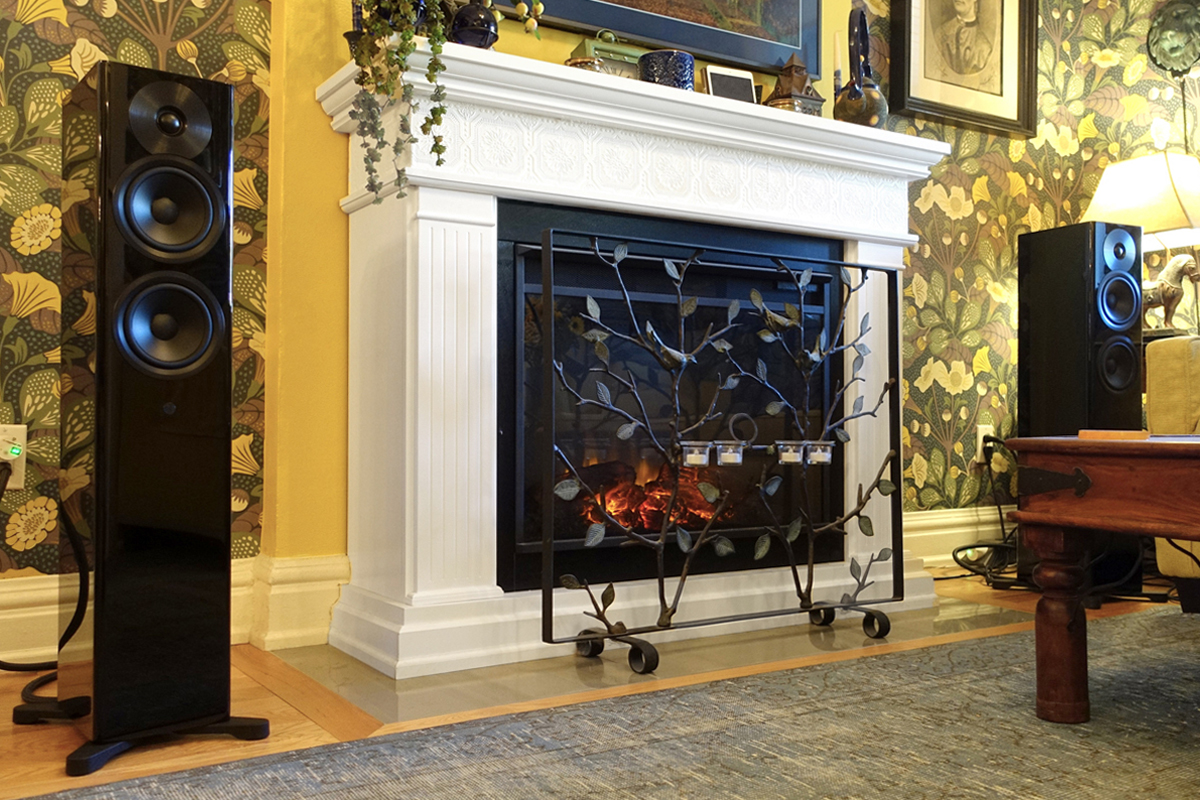 Dynaudio’s Focus 30 active speaker system lets you tailor output for placement near a corner, along a wall, or out in the open
Dynaudio’s Focus 30 active speaker system lets you tailor output for placement near a corner, along a wall, or out in the open
User-selectable modes for different placements: Active models can provide user-switchable (or automatic) mode selection to compensate for the acoustic environment (such as being close to a wall or corner), helping to maintain balanced sound regardless of room geometry. This adaptability enhances usability in real-world environments.
Upgradable and customizable signal processing: Digital active speakers can allow crossovers and signal processing to be reconfigured on the fly. Users can tailor sound through presets or by downloading customized DSP profiles such as Buchardt Audio’s Mastertunings and System Audio’s RAM Tweaks. This ensures the speakers stay up-to-date and can be adapted to changing preferences or environments.
 Buchardt Audio’s Anniversary 10 active speaker lets users customize crossover and EQ settings via downloadable files called Mastertunings
Buchardt Audio’s Anniversary 10 active speaker lets users customize crossover and EQ settings via downloadable files called Mastertunings
Closed-loop monitoring and feedback: Speaker-amplifier integration enables real-time monitoring and feedback-driven correction, further linearizing the system and reducing distortion, as is done with KEF’s VECO technology. This closed-loop capability provides a level of control and playback accuracy that’s not possible in conventional passive setups.
Advanced multi-driver designs and directivity control: Active designs can feature novel speaker arrangements where multiple drivers have their drive signals independently processed (using distinct versions of the input signal). This allows for real-time adjustments of directivity or room interaction (as seen in highly advanced systems like the Beolab 90 by Bang & Olufsen), achieving physical feats impossible for passive designs.
Plug-and-play convenience: Most active speakers are truly plug-and-play. Many have built-in network streamers, meaning they do not even require a connection to a source device. This simple setup eliminates the need for connecting components and reduces complexity for users who want fast, reliable operation.
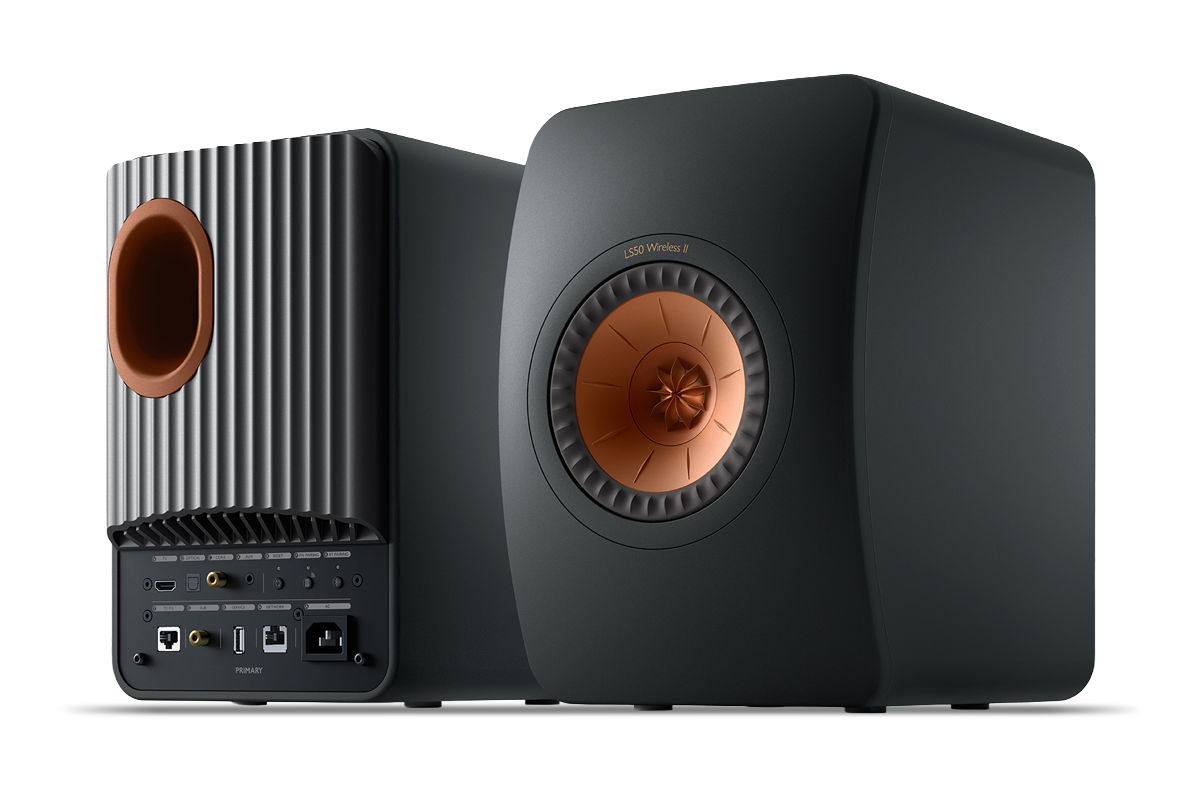 KEF’s LS50 Wireless II active speaker system is about $1000 cheaper than a system comprising a pair of LS50 Meta passive speakers and a streaming integrated amplifier, yet offers similar functionality
KEF’s LS50 Wireless II active speaker system is about $1000 cheaper than a system comprising a pair of LS50 Meta passive speakers and a streaming integrated amplifier, yet offers similar functionality
Cost advantage: With the advent of low-cost, mass-produced class-D amplifier modules, active systems can now be less expensive than equivalent passive ones, especially as they avoid the need for costly high-grade passive crossover components or amplifier housings. In his August 2022 piece “The Great Debate: Is Component Hi‑Fi Dead?,” Gordon Brockhouse clearly illustrated this point by comparing the passive KEF LS50 Meta and the active LS50 Wireless II, concluding that the active KEF system was at least $1000 cheaper than a comparably featured system built around the LS50 Metas.
These benefits make active speaker systems exceptionally attractive for anyone seeking high performance, convenience, and reliability in audio reproduction.
Those who argue that maintaining separation between the amplifier and speaker allows designers to perfect each piece without compromise are ignoring the fact that combining the two into an integrated system allows the electronics to correct, assist, and improve the speaker’s acoustic performance in ways that simply aren’t possible when their independence is maintained. With an active system, the whole can be considerably greater than the sum of the parts.
It’s worth noting, though, that top-tier performance can only be achieved by speakers intended to be active from conception, allowing full optimization of the design throughout the development process. That is to say that there are plenty of examples of brands that first build passive speakers, then offer an active version based on the same drivers and mechanical concept. These products are generally not as well optimized, and they fail to fully exploit what’s possible from an active design built from the ground up.
The benefits aren’t just theoretical. It’s why companies like Genelec, Neumann, and Dutch & Dutch can achieve reference-level neutrality and coherence from compact enclosures. The Dutch & Dutch 8c, for example, has gained a dedicated following among audio professionals and home users alike for its controlled cardioid dispersion and stunning in-room accuracy. It’s a masterclass in what can be achieved when amplification, DSP, and cabinet design are perfectly integrated.
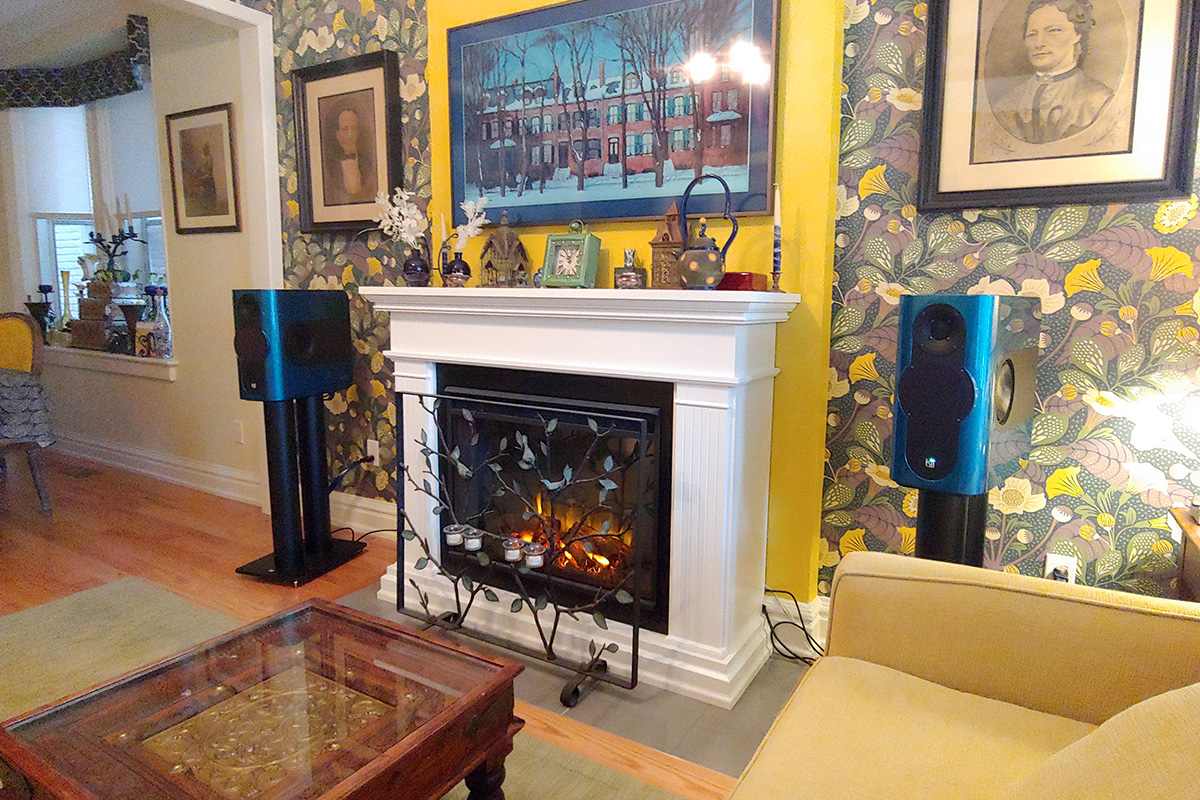 The Kii Audio Three uses a DSP technique it calls Active Wave Focusing to achieve a cardioid (front-facing) radiation pattern for all frequencies, vastly reducing the negative effects of the listening room on the sound
The Kii Audio Three uses a DSP technique it calls Active Wave Focusing to achieve a cardioid (front-facing) radiation pattern for all frequencies, vastly reducing the negative effects of the listening room on the sound
Similarly, Kii Audio’s Three speaker system pushes the boundaries of what’s possible in a domestic setting. Its controlled directivity, time-aligned drivers, and advanced DSP make it not just competitive with, but superior to, traditional separates costing six figures.
For an aesthetic with a high chance of domestic approval, KEF’s LS60 Wireless system brings this advanced active philosophy into the home with style and elegance. Drawing from the legendary Blade speaker lineage, the LS60 is a lifestyle-friendly floorstanding design that blends cutting-edge acoustic engineering with streaming convenience. It may look sleek and minimal, but its three amplifiers per speaker, advanced DSP, and Uni-Q driver array deliver serious performance.
The joy of tinkering
So why, despite this laundry list of clear benefits—and some very convincing real-world examples of products showcasing them—do so many audiophiles still turn their noses up at active designs? Could it be that the ultra-high-end is more about prestige and aesthetics than objective performance? Because tube amps and class-A solid-state amps are not suited to working in small, enclosed spaces? Or is there more to it?
Passive systems appeal to the audiophile tradition of system-building as both hobby and art form, offering enthusiasts tangible engagement through the process of assembling, tweaking, and incrementally upgrading separate components—from sources, preamps, and power amps to speakers, interconnects, and cables. This modular approach provides a sense of personalization and control, allowing users to continually experiment as they chase the elusive “perfect synergy” between components.
For enthusiasts, building an audio system can feel like embarking on an endless voyage—one component replaced at a time, each upgrade gradually shifting the system’s character while preserving its identity. This process closely mirrors the philosophical puzzle known as the Ship of Theseus, which asks whether an object remains fundamentally the same if all of its parts have been replaced over time. According to this classic thought experiment, Theseus’s legendary ship was maintained for centuries, with every plank and nail eventually replaced. Philosophers question whether, after all those replacements, the resulting vessel could still genuinely be called the original ship.
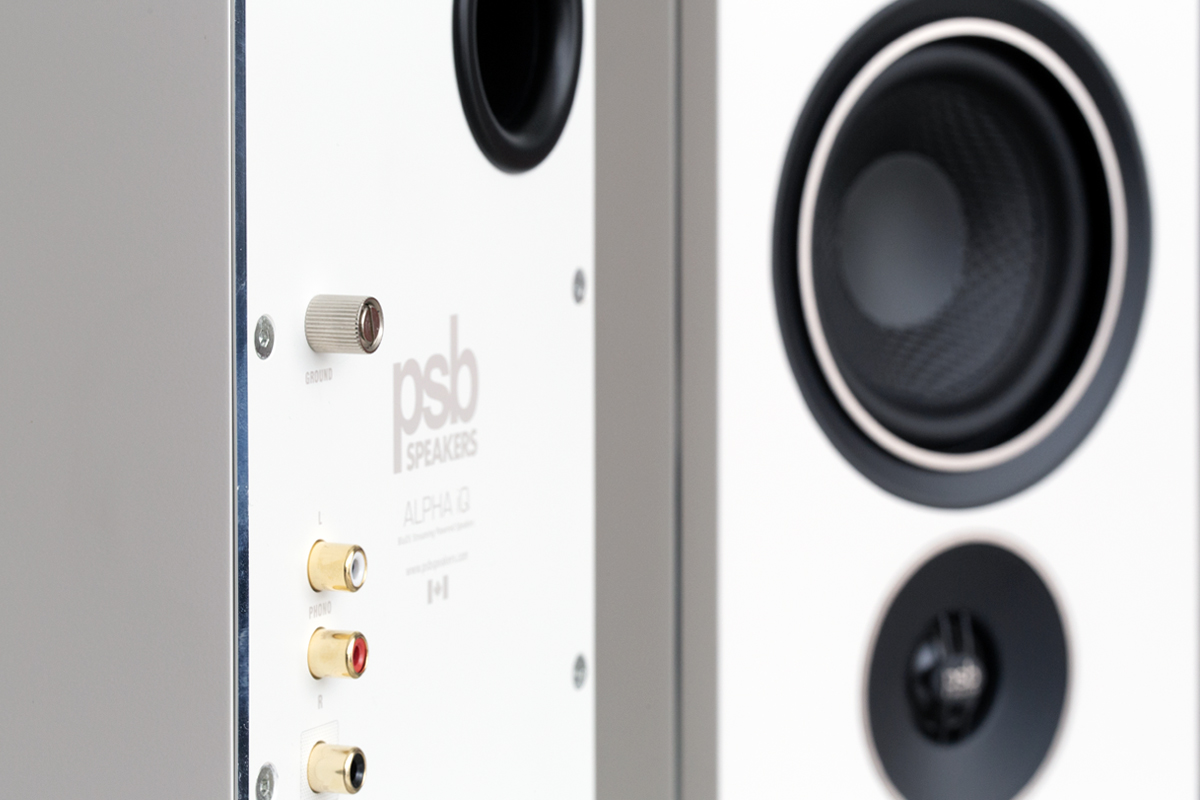 The PSB Alpha iQ loudspeaker system can accommodate external components such as turntables and CD players, but thanks to its built-in music streamer, it can be used on its own
The PSB Alpha iQ loudspeaker system can accommodate external components such as turntables and CD players, but thanks to its built-in music streamer, it can be used on its own
Audiophiles face a remarkably similar scenario. As they replace speakers, amplifiers, cables, and sources—piece by piece, year after year—their system continuously evolves. Each individual change might seem minor, but collectively these updates transform the audio experience dramatically. Yet most enthusiasts would still identify the resulting setup as uniquely “theirs,” anchored not just in components but in the intention, taste, and meticulous effort poured into it.
In this sense, a traditional hi‑fi system, like the Ship of Theseus, is not just the sum of its parts. It’s a reflection of personal evolution, taste, and accumulated wisdom. It may change radically from its starting point, but its identity remains intact—rooted not in individual pieces, but in the ongoing journey of thoughtful refinement.
Active speakers, DSP-driven and integrated, are frequently viewed as lifestyle products rather than true hi‑fi, precisely because they restrict this experimentation and the ability for hardware tweaks to influence the system’s sound—thus diminishing the core audiophile experience.
They are effectively closed systems, so buying an active system takes away the ability to make choices, to feel as though your part in the selection process is the special sauce needed to make the system sing. The amplifier has been chosen for you, the crossover optimized, and it’s all neatly enclosed. This might feel like a loss of agency for some, a surrender of the hobby’s hands-on, experimental spirit.
It also means you lose the opportunity to endlessly discuss the various merits of interconnects and speaker cables (that make no perceptible difference to the sound). Why would an audiophile ever want a system that was “done,” something they couldn’t continue to endlessly upgrade? When you buy active speakers, you lose your audiophile card!
Spending addiction or hobby?
Perhaps the cynical answer to why passive systems still dominate the world of hi‑fi is brazen consumerism. If all the individual elements of the signal chain can be swapped out, then brands and shops can happily continue to sell component upgrades to willing customers. You don’t simply buy a hi‑fi system; you embark on a journey. That’s why it’s considered a hobby, after all.
There’s a reason most high-end audio manufacturers are content to not deviate too far from the offerings that are already on the market. Companies that have traditionally focused only on speakers likely don’t want to set up an additional department with electrical engineers to incorporate amplification into their products. Adding amplification to a speaker entails electrical certification requirements for the various regions where the product is sold; these requirements don’t exist for passive loudspeakers. Supply chains, production processes, and shipping have all been optimized for passive speaker boxes. The status quo of selling boxes of air has proven quite profitable.
It’s not totally clear whether this old-school stubbornness has been primarily driven by the equipment manufacturers or by their customers. But if you’re paying attention, you’ll notice that the times they are a-changing.
Modern listening
The way we listen to music has changed. Streaming is now the norm, and many listeners want systems that are simple, compact, and unobtrusive. Since active speakers increasingly feature built-in Wi-Fi networking and/or Bluetooth, they deliver the all-in-one convenience that many consumers want: just plug them in, connect your phone or computer, and you’re ready to go.
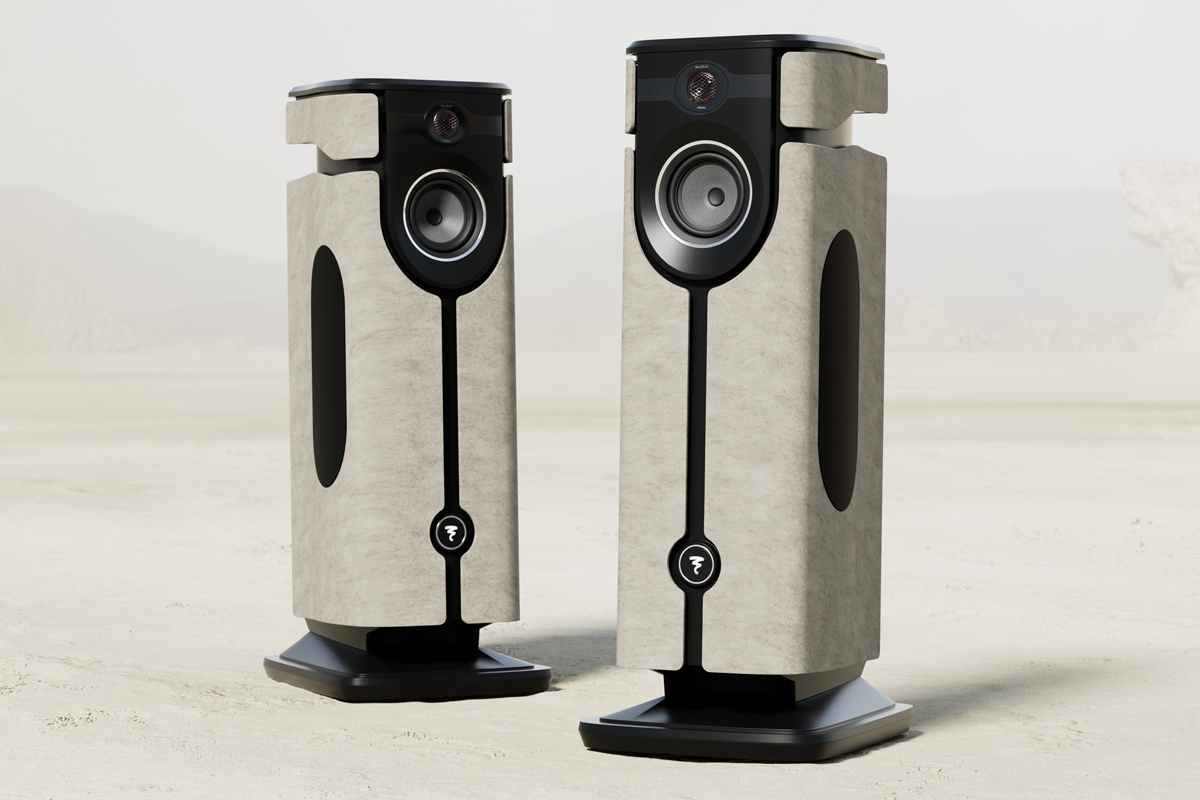 Focal’s new flagship active speaker system, the Diva Mezza Utopia, incorporates a network streamer that supports Apple AirPlay, Google Cast, Qobuz Connect, and UPnP/DLNA
Focal’s new flagship active speaker system, the Diva Mezza Utopia, incorporates a network streamer that supports Apple AirPlay, Google Cast, Qobuz Connect, and UPnP/DLNA
Active speakers are where the real innovation is happening in this industry. It is interesting to note that we’ve recently been witnessing a reversal of the way new technology typically trickles down from high-end flagship products to mainstream consumer devices. Instead, we’re seeing wireless connectivity and streaming technologies first appearing in mass-market products, which are “trickling up” to the flagship speaker models of high-end brands. A case in point: Focal’s Diva Utopia and Diva Mezza Utopia streaming active speakers augment the French brand’s flagship Utopia line with plug-and-play convenience typically found in lower-priced consumer products.
Make it simple
The ethos behind SoundStage! Simplifi is all about making high-fidelity music accessible, enjoyable, and harmonious with the way we live. Active speakers embody this philosophy: they deliver great sound without the clutter and complexity of traditional systems. No need for racks of gear, piles of cables, or dedicated listening rooms. Active systems have a minimal footprint and fit seamlessly into modern living spaces. With wireless connectivity and flexible placement, active speakers are easier to integrate into multipurpose rooms.
Ultimately, the goal of high-fidelity audio is to bring us closer to the music. Active loudspeakers, when thoughtfully designed, do just that. They remove barriers between the listener and the performance, making great sound accessible to more people.
The reluctance of audiophiles to embrace active loudspeakers is rooted less in technical reality than in tradition, habit, and a love of ritual. Active loudspeakers are not a compromise. In fact, the opposite is true. They are, in many ways, the logical next step in the evolution of high-fidelity audio, offering superior engineering, convenience, and sound quality in a package that fits the realities of modern life. For those willing to let go of old prejudices and embrace the future, the rewards are rich indeed.
The market for active loudspeakers is growing, with more brands offering high-quality, aesthetically pleasing options at various price points. Innovations in DSP, streaming, and wireless technology are making active systems more versatile and frictionless than ever. That’s generally what happens with innovation: legacy industries and legacy companies are a little hesitant, reluctant to let go, and then eventually the path forward becomes so obvious that they concede.
So, the next time you find yourself yearning for a simpler, more musical life, consider an active system. You might just discover that less really can be more. Not because the gear is simpler, but because the design is smarter.
. . . AJ Wykes



